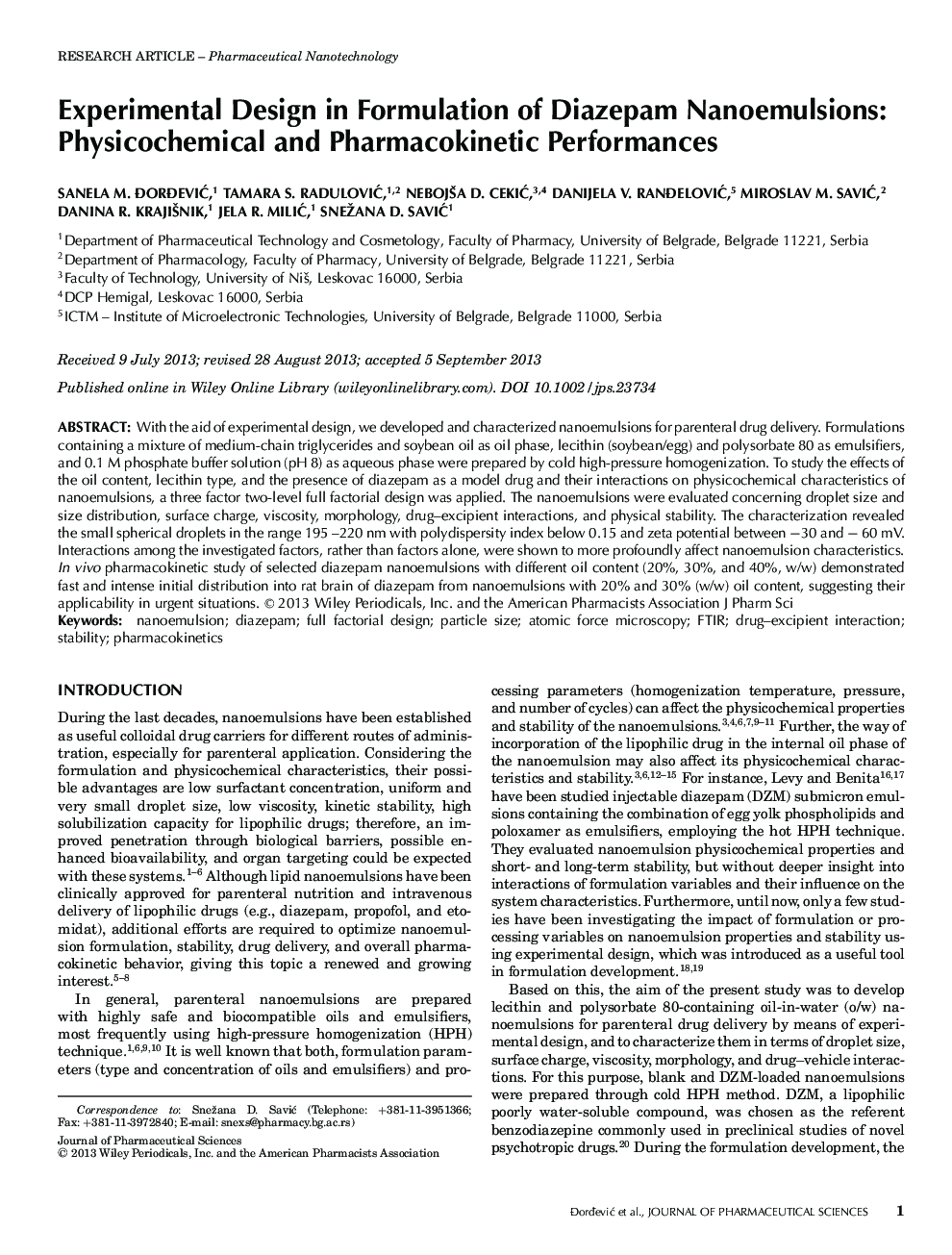| Article ID | Journal | Published Year | Pages | File Type |
|---|---|---|---|---|
| 2484801 | Journal of Pharmaceutical Sciences | 2013 | 14 Pages |
Abstract
With the aid of experimental design, we developed and characterized nanoemulsionsfor parenteral drug delivery. Formulations containing a mixture of medium-chain triglycerides and soybean oil as oil phase, lecithin (soybean/egg) and polysorbate 80 as emulsifiers, and 0.1 M phosphate buffer solution (pH 8) as aqueous phase were prepared by cold high-pressure homogenization. To study the effects of the oil content, lecithin type, and the presence of diazepam as a model drug and their interactions on physicochemical characteristics of nanoemulsions, a three factor two-level full factorial design was applied. The nanoemulsions were evaluated concerning droplet size and size distribution, surface charge, viscosity, morphology, drug-excipient interactions, and physical stability. The characterization revealed the small spherical droplets in the range 195-220 nm with polydispersity index below 0.15 and zeta potential between â 30 and â 60 mV. Interactions among the investigated factors, rather than factors alone, were shown to more profoundly affect nanoemulsion characteristics. In vivo pharmacokinetic study of selected diazepam nanoemulsions with different oil content (20%, 30%, and 40%, w/w) demonstrated fast and intense initial distribution into rat brain of diazepam from nanoemulsions with 20% and 30% (w/w) oil content, suggesting their applicability in urgent situations.
Keywords
Related Topics
Health Sciences
Pharmacology, Toxicology and Pharmaceutical Science
Drug Discovery
Authors
Sanela M. ÆorÉeviÄ, Tamara S. RaduloviÄ, NebojÅ¡a D. CekiÄ, Danijela V. RandeloviÄ, Miroslav M. SaviÄ, Danina R. KrajiÅ¡nik, Jela R. MiliÄ, Snežana D. SaviÄ,
